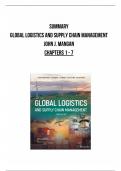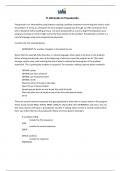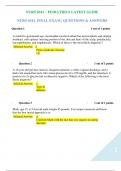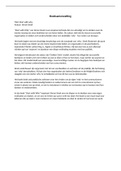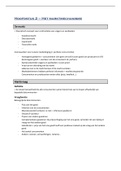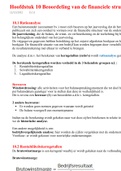Resume
Summary Global Logistics and Supply Chain Management, Mangan, New 2024, Chapters 1 - 7
This is a new (2024) summary of chapters 1 - 7 of Global Logistics and Supply Chain Management by Mangan. This is the fast-reading version, reading time about 40 minutes. Great for exam preparation!
[Montrer plus]
